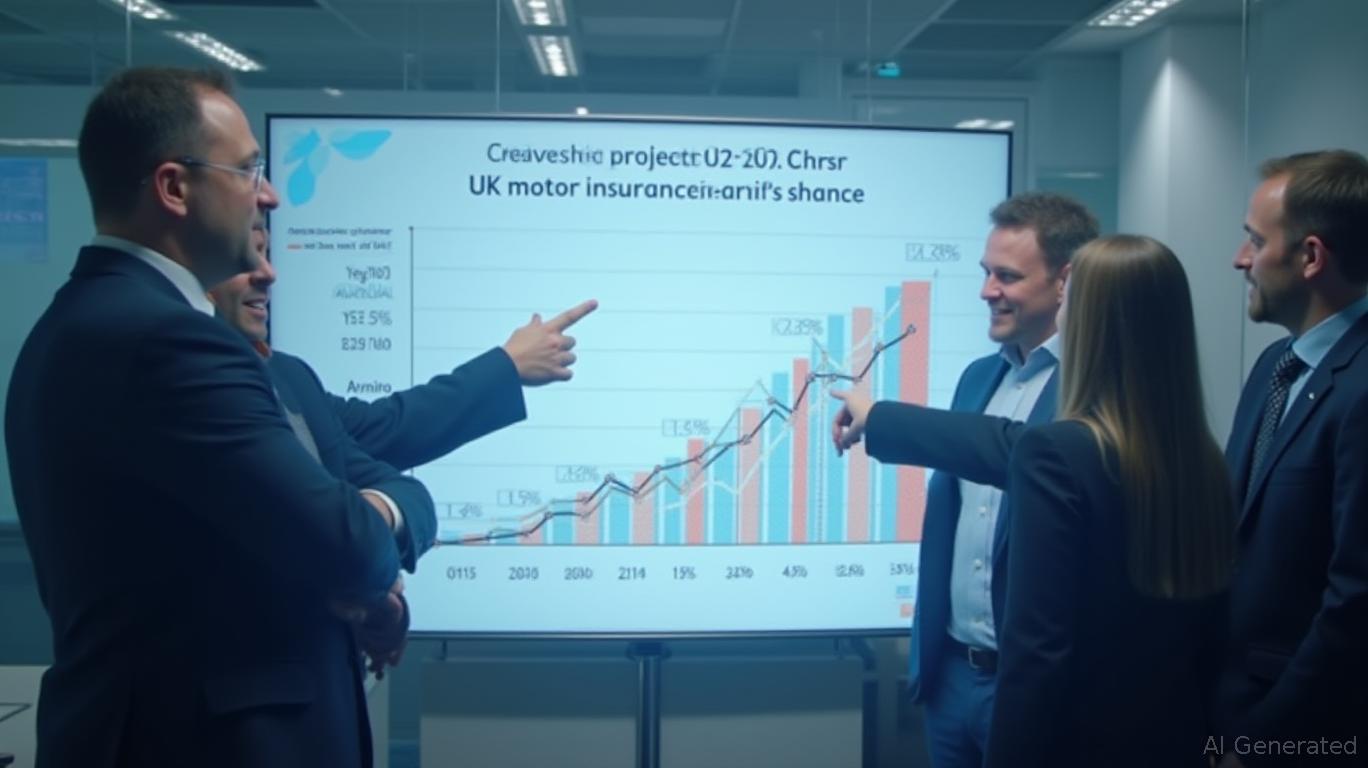Aviva's Direct Line Acquisition: Unlocking Upside Amid Regulatory and Synergy Potential
Aviva's proposed £3.7 billion acquisition of Direct Line Group has sparked intense debate over its strategic merits and regulatory risks. The deal, if cleared, would transform Aviva into the UK's largest motor insurer, while unlocking significant synergies and market leverage. With the Competition and Markets Authority (CMA) set to deliver its Phase 1 decision by July 10, investors are weighing the risks of regulatory hurdles against the transformative upside of this merger. Here's why the deal's potential justifies a bullish stance on Aviva, even amid uncertainty.

Strategic Valuation: Scale and Market Dominance
The acquisition positions Aviva to dominate UK property and casualty (P&C) markets, particularly in motor and home insurance. Combined, the firms would command 20–25% market share in motor insurance, doubling Aviva's current position and surpassing rivals like Admiral and AXA. This scale could enhance pricing power, reduce distribution costs (e.g., on price comparison websites), and strengthen cross-selling opportunities through Aviva's MyAviva platform. Analysts estimate £100 million in annual cost synergies by 2025, with a 13% net insurance margin target by 2026.
The deal also expands Aviva's customer base to 25 million, enabling deeper engagement across home, travel, and motor products. While the
is scrutinizing potential antitrust issues, JP Morgan argues that the merger's benefits outweigh competition concerns, citing the fragmented UK P&C market and Aviva's proven track record in operational efficiency.Regulatory Risks: Manageable Hurdles
The CMA's Phase 1 review, launched May 14, focuses on whether the merger could reduce competition in motor and home insurance. Key risks include:
- A Phase 2 investigation, which could delay the deal until early 2026 or beyond.
- Concessions like asset sales or pricing commitments to address market dominance concerns.
However, analysts at JP Morgan and Bloomberg Intelligence believe a Phase 2 outcome is unlikely, noting Direct Line's modest profitability and the CMA's push for faster merger reviews under its updated “Mergers Charter.” Even if delays occur, Aviva's shares are trading at a 8.3x forward P/E (2026)—a discount to peers like UK life insurers (9x) and European composite insurers (10x)—providing a safety margin.
JP Morgan's Bullish Case: 615p Target and EPS Upside
JP Morgan recently upgraded Aviva to Overweight with a 615p price target, citing the deal's 10–12% EPS accretion by 2028 and its potential to shift Aviva's earnings mix toward higher-margin P&C segments. Analysts project a 6–17% upside to consensus EPS estimates for 2026–2027, driven by:
1. Synergies: Cost savings and cross-selling boosting margins.
2. Market Share Gains: Dominance in UK P&C markets enabling premium growth.
3. Multiple Expansion: Aviva's valuation could rise to 10–12x forward P/E if the merger unlocks growth visibility, aligning it with peers.
JP Morgan also highlights that even if the deal fails, Aviva's £3.4 billion cash pile allows it to return capital via buybacks or dividends, mitigating downside risks.
Valuation: Undervalued on Forward Metrics
While Aviva's trailing P/E of 25.5x appears elevated, its forward P/E of 8.3x (2026) reflects pessimism around near-term execution risks. This is a stark contrast to its peers, where UK life insurers trade at 9x and European composites at 10x. Analysts argue the discount is unwarranted given:
- The merger's accretive nature.
- Aviva's strong balance sheet (Solvency II ratio ~200%).
- Its dividend yield of 5.7%, supported by a robust free cash flow of £1.9 billion.
Contingency Scenario: Capital Returns if the Deal Fails
Even without the merger, Aviva's management has signaled a £350 million annual buyback program by 2026, funded by operational cash flow. This provides a “win-win” scenario:
- Deal succeeds: Synergies drive earnings growth and multiple expansion.
- Deal fails: Share buybacks and dividend hikes offset disappointment, supporting valuation recovery.
Conclusion: A Compelling Risk-Return Profile
Aviva's Direct Line acquisition offers a rare opportunity to invest in a UK insurer with strategic transformation potential at a discounted valuation. While regulatory risks linger, the CMA's focus on speed and proportionality, coupled with Aviva's strong fundamentals, suggest the deal is likely to proceed. JP Morgan's 615p target (vs. current ~606p) implies 2% near-term upside, but the long-term narrative—dominance in UK P&C, synergies, and multiple expansion—argues for a 10–15% total return within 12–18 months.
For income-focused investors, the 5.7% dividend yield adds further appeal. Even skeptics must acknowledge that Aviva's valuation and contingency plans limit downside risk. This makes the stock a must-watch play in UK insurance, with potential to outperform peers if the merger clears hurdles.
Investment Recommendation: Overweight Aviva with a 615p target, supported by a risk-reward ratio favoring buyers. Monitor the CMA's July 10 decision closely, but consider accumulating shares at current levels ahead of catalysts.

Comments
No comments yet